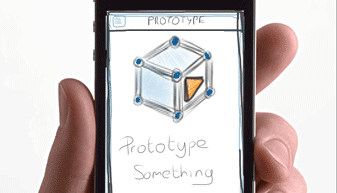In broad terms, user-centered design (UCD) is a type of user interface design and a process in which the needs, wants, and limitations of end users of a product are given extensive attention at each stage of the design process. User-centered design can be characterized as a multi-stage problem solving process that not only requires designers to analyse and foresee how users are likely to use a product, but also to test the validity of their assumptions with regards to user behaviour in real world tests with actual users. Such testing is necessary as it is often very difficult for the designers of a product to understand intuitively what a first-time user of their design experiences, and what each user's learning curve may look like.
Source: http://en.wikipedia.org/wiki/User-centered_design
in simple words we develop all of those software's and Mobile Applications , targeting people if they are not satisfyed our work is useless so to out put a good product we have to deliver a product that satisfying the user, so for that we need a User Centered Design Process.
Source: http://en.wikipedia.org/wiki/User-centered_design
in simple words we develop all of those software's and Mobile Applications , targeting people if they are not satisfyed our work is useless so to out put a good product we have to deliver a product that satisfying the user, so for that we need a User Centered Design Process.
User-Centered Mobile Design Starts With The User
User-centered design relies on user involvement throughout the design process, leading to a solution that users will find useful and want to use. To achieve that, you first need to have a clear understanding of your users, grouped into a prioritized set of user groups whose needs can be thought of individually. For a pharmaceutical company, those groups could be patients, healthcare professionals and caregivers, with the first two groups being the primary user groups, and caregivers being a secondary user group with very similar needs to patients. Identifying your key user groups and creating personas will help you design better for your main users, the way BBC did when building their future mobile strategy.
Source:http://mobile.smashingmagazine.com/2011/05/02/a-user-centered-approach-to-mobile-design/
More Information :http://www.it.iitb.ac.in/~s1000brains/rswork/dokuwiki/media/designing_for_mobiles.pdf
More Information :http://www.it.iitb.ac.in/~s1000brains/rswork/dokuwiki/media/designing_for_mobiles.pdf







.png)





